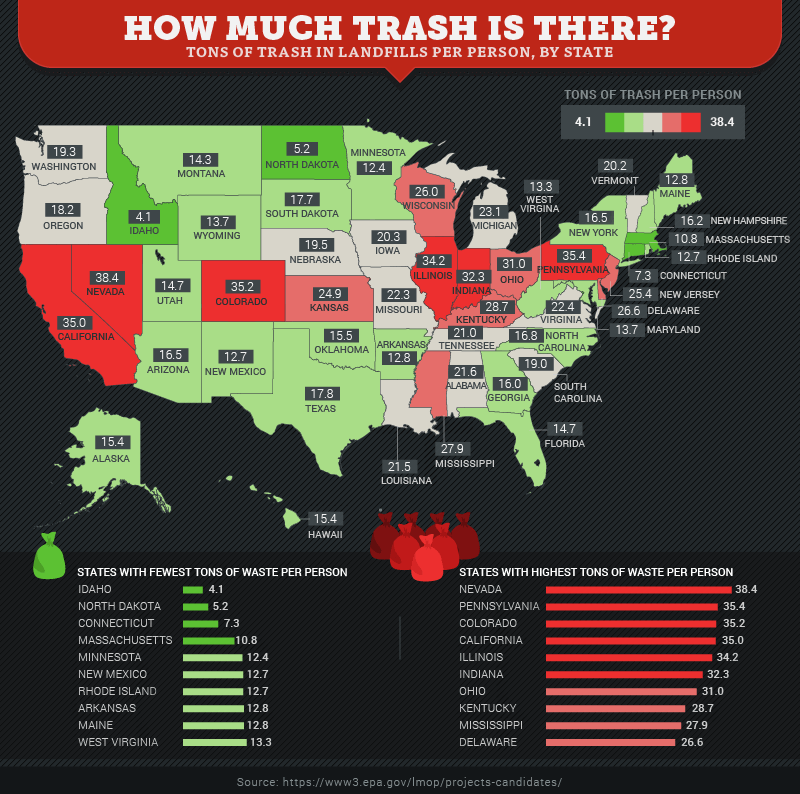Category: Nature
November 13, 2024

Technology can be a useful friend in re-shaping waste management systems while the state deal with the growing challenges posed by waste production.
Innovative technologies are necessary to accelerate the movement toward a more sustainable planet with global waste generation estimated at 3.4 billion tons by 2050, up from 2.01 billion tons in 2016, the need to reduce environmental impact and develop more effective and sustainable waste management solutions is paramount.
Smart waste collection systems, waste pickers collection projects with AI solutions, projects on waste derived product recycling as well as new technology based solutions(i.e. pyrolysis) are essential components to maximize efficiency in controlling generated waste and handling it accordingly from source and onwards with the potential of transforming waste to resource or deriving energy.
It revolutionizes waste collection systems
Current waste collection systems are often suboptimal as they rely on fixed schedules and routes which do not allow for the different waste volumes produced in various places. This leads to either having the bins emptied when they are only half-full, or leaving a bin unattended until it filled up thus overflowing with trash.
A solution to this problem is provided by the so-called Smart waste collection systems, which use sensors and provide real-time information on a value of filled up with trash bin or garbage container. Garbage trucks are optimized in their collection routines to empty full trash cans with the help of these sensors communicating back to waste management systems. These involve the deployment of several Internet of Things (IoT) sensors in trash bins by companies such as Enevo and Bigbelly, which help to dramatically reduce pickups that bring down operational costs.
These systems can lead to the reduction in fuel consumption and carbon emissions with optimal waste collection routes, thus ensuring that you operate a more sustainable waste management process. They also help local governments and waste companies optimize resource allocation, so that garbage collection can be performed more effectively, avoiding overflowing bins that contribute to the overall littering of streets.
Recycling Innovations
Although recycling is essential for reducing waste in the landfill or incinerator, traditional recycling systems are usually inefficient and often “is a mess. Technology changes the way we recycle our waste. Technology is beginning to make a real difference in the world of recycling and one company leading the charge is our friends at Green Mark. The latter involves advanced sensors and sorting technologies that help to better separate materials from each other, ultimately reducing the contamination in the recycling stream.
Optical sorting technology is an advancement over that. Optical sensors can detect and sort different plastics, metals, and paper depending on their chemical composition or colour. This tech is able to sort those recycling at a much higher clip and with better accuracy, helping increase the efficiency of recycling plants everywhere. One example are optical sensors and near-infrared technology used by companies such as Tomra that enable the sorting of trash to be fully automated, while significantly enhancing recycling rates and lowering labor costs when it comes to manual sorting.
Robotics and AI are making big contributions where recycling is concerned as well. Robots even powered by AI like those made by AMP Robotics can rapidly spot and sort out recyclable materials on a conveyer belt. These robots get better over time, learning how to distinguish different types of waste and most efficiently deal with it. AI and robotics are also helping to enable smarter, faster sorting of recycling, as well as reducing contamination in recycling streams to make it a more efficient and cost-effective process.
Chemical recycling, which does not follow traditional mechanical methods of recycling, is another significant innovation. Chemical recycling is a process that breaks down plastics into their basic chemical building blocks, reclaiming them for the production of new products without loss in material quality. By developing processes to turn waste plastics into high quality feedstock for the manufacture of new plastic, companies such as Loop Industries are helping close the loop on recycling and reduce the demand for virgin plastic materials.
Waste-to-Energy Technologies
Waste-to-Energy (WTE) technologies One of the other great technological advances that have been made in waste management is with regard to WTE technologies. The energy conversion processes used can convert the waste materials into forms of energy that can directly replace products from fossil fuels: heat (or steam), electricity, or gas for use in CHP systems, which eliminate waste that otherwise would be landfilled and also provide a renewable source of energy.
Waste-to-energy is a well-established method of treating incineration waste, and modern WTE techniques are far more developed than in the past. Using the likes of gasification or pyrolysis, such processes entail heating waste at temperatures so high oxygen can’t be present, thus breaking it down into a synthetic gas or oil which can power energy systems. These technologies will typically produce fewer emissions than traditional incineration and are considered more sustainable options for waste management.
Meanwhile, anaerobic digestion is the form of waste-to-energy technology that is emerging. In turn, bacteria breakdown organic waste (food scraps and agricultural waste) in an oxygen-free environment which releases biogas that can even be used as fuel. This not only eliminates methane from landfills, but provides renewable energy. In Europe it is already highly employed, and in the U.S., cities and municipalities are opting for better organic waste treatment methods such as anaerobic digestion.
Data-Driven Waste Management
New technologies offer the ability to analyze data, and waste management is a perfect example of industries that big data and data analytics can completely change the way places or companies handle it. Through data we can know what waste generation, collection and disposal patterns are in the municipalities, thereby managing this destination more optimally and cheaper. Waste management companies using data-driven platforms like Rubicon can monitor waste collection routes, recycling rates and landfill usage in real time and run their operations more efficiently.
AI-driven predictive analytics additionally will offer insights into the waste production trends vis-à-vis to overall population growth, consumption patterns and economic activities thereby predicting future garbage generations. It helps cities and waste management companies be better prepared, so they can plan for the future and deal with high-growth regions more readily. This richer detail allows the city to use data-driven solutions by pinpointing areas of high waste generation and low recycling rates, to more efficiently target educational campaigns and policies aimed at reducing waste and increasing recycling participation.
Waste Management & Blockchain
Whilst typically associated with cryptocurrencies, the use of blockchain technology has been mooted for use in waste management solutions. By utilizing blockchain, waste management processes can be tracked more transparently and securely from the time when the waste is generated up until it reaches its last destination, reuse or recycling. It could cut down illegal dumping, bring accountability in waste management supply chain and make compliance easier for all.
One of them is the use of blockchain for social good, as implemented by companies like Plastic Bank (PlasticBank.net ), that uses a digital token in exchange for trash people collected over developing countries. This lays a framework that is transparent enough to track the success or failure of recycling plastic waste at the micro-level.
Technology is increasingly changing how waste management operates and it promises to provide solutions for many of the current challenges that the world needs to solve regarding waste reduction, recycling and resource management.
Technological improvements, ranging from intelligent waste collection systems and artificial intelligence (AI) driven recycling solutions to waste-to-energy processes and data-supported decision making for improved efficiency and sustainability of services, have led a transformation in the way that resources are being utilized now. With the ever increasing worldwide waste production, these will play a key role in minimizing the ecological footprint of waste and guaranteeing a more sustainable future for future generations with environmentally friendly solutions for waste management.
August 25, 2024

While it did not exist until the end of the 19th century, waste has colonized the living. Beyond the technical challenges it raises, it has become a field of investigation for the human sciences, which seek to shed light on the systems and myths at the source of its production.
It has become the familiar companions of our modern destinies. Abandoned on beaches, trapped in glaciers or concentrated in gigantic vortices in the oceans, waste has invaded all environments, colonizing even the living. Microscopic or cumbersome, in solid, liquid or gaseous state, it traces new globalized paths on the seas, saturates the air and the soil, and now invests space. Sometimes described as ultimate or eternal pollutants, it imposes itself on our plates, our drinking water, and even the tips of our hair.
The figures are staggering. Annual production of solid waste has exceeded 2 billion tons worldwide and is expected to reach 3.4 billion in 2050, warns the World Bank. The production of plastics has doubled in twenty years, estimates the Organisation for Economic Co-operation and Development (OECD), two-thirds of which are landfilled, incinerated or released into the environment.
While this omnipresence directly affects human health and that of ecosystems, it also leaves an indelible mark on human activities on Earth. Since the first piles left at the entrance to caves, witnesses to its sedentarisation, detritus tells the story of Homo sapiens, including construction waste.
Waste is everywhere
Microparticles of various plastics have been found in all the livers of people with cirrhosis. Conversely, they were undetectable in people without liver disease. Could they be the cause or consequence of the pathology? The authors of this study published in eBioMedicine are working on it, but note in any case that these substances can accumulate in human peripheral organs. Until now they had been found in blood, stools and the placenta.
They have landed in our trash, carried by advertising and its mirages of cleanliness and individuality. However, paradoxically, the more beautiful and white they are, the more polluting they are. These are the disposable objects, cups, handkerchiefs, telephones, deodorant sticks, whose history philosophers trace in her consumerism through its objects.
Indispensable telephones
Without being immediately disposable, but at least as polluting, smartphones have been the subject of a rapid and massive diffusion, at a unique point in the history of technology. Thanks to the systemic network effect, the object becomes in itself a means of integration, or exclusion.
In some countries, such as China, you need a smartphone to take public transportation. An expert in planned obsolescence warns the reader against the many ways to avoid overconsumption. Do we really prevent overconsumption, for example, by marketing a vegetarian steak? Do we really help the environment by replacing polystyrene with cardboard, as McDonald’s did in the 1990s? Why not reduce the use of plastic altogether rather than relying on recycling it? Should laws on planned obsolescence, such as the one in force in Virginia, be more widely applied?
How the state of Virginia is developing policies to reduce waste
The state of Virginia is actively developing and implementing policies aimed at reducing waste and promoting environmental sustainability. One of the central efforts is the Virginia Environmental Excellence Program (VEEP), which encourages businesses and local governments to adopt proactive environmental management practices, including waste reduction and recycling initiatives. Participants in the VEEP like Same Day Dumpster Rental Norfolk are recognized for their commitment to sustainability and can benefit from regulatory flexibility and other incentives.
The state of Virginia has also been working on enhancing its solid waste management regulations. The Department of Environmental Quality (DEQ) oversees these regulations, focusing on comprehensive waste management strategies that include recycling, composting and waste-to-energy programs. The DEQ provides guidance and support to local governments and businesses to improve their waste reduction efforts and compliance with state and federal laws.
Another significant policy initiative is the Virginia Plastic Waste Prevention Advisory Council, established to address the growing issue of plastic waste. The council is tasked with developing strategies to reduce plastic pollution, promoting the use of alternative materials and increasing public awareness about the environmental impacts of plastic waste.
Virginia is also investing in public education campaigns to raise awareness about the importance of waste reduction and recycling. These campaigns aim to inform residents about best practices for reducing household waste, proper recycling techniques, and the benefits of composting organic materials.
Through these combined efforts, the state of Virginia is making strides in reducing waste generation, enhancing recycling rates, and fostering a culture of sustainability among its residents and businesses.
January 26, 2024

What is construction waste
Site waste (or construction waste) is all materials generated by construction activities. These include materials left on the construction site, such as bricks, concrete, wood and metal. Construction waste also includes packaging materials, such as cardboard boxes and plastic packaging.
Although some construction waste can be recycled or reused, most of it ends up in landfills. Landscaping and demolition projects generate the largest amount of construction waste. In fact, construction and demolition activities account for around 40% of all waste sent to landfills each year in France. To learn more about construction waste and ways to reduce it, read on!
Definition of construction site waste
Construction waste is a major environmental problem worldwide and poses a significant threat to human health and the environment. This refers to all debris produced by construction or building activities, such as old materials, packaging, earthworks, rubble and various other discarded items that are generated during the construction process. Construction waste is hazardous by nature and takes up considerable space in landfills if not disposed of properly.
Additionally, if burned, they release toxic fumes into the atmosphere, resulting in air pollution. Therefore, proper management of construction waste is of utmost importance to combat these serious environmental problems, preserve public health and safety, and build a sustainable society for future generations. To achieve this goal, the adoption of environmentally friendly practices such as recycling or reuse of building materials should be encouraged wherever possible.
Construction waste in Oklahoma amounted to 11 million toes. Only about 8-15% of all construction waste is reused or recycled. 20% of all non-hazardous industrial waste came from the construction sector
The different types of construction waste
Construction waste can be a real burden on the environment, with everything from soil and debris to concrete, roofing materials and more contributing to it. However, there are ways to reduce this waste through smart practices such as landfilling, burning or recycling materials. It is important to know the different types of materials that fall into this category in order to consider proper disposal methods.
For example, concrete can often be crushed and reused for residential or commercial purposes, while lumber and other wood materials must be burned if they are not fully recyclable. Finally, hazardous substances such as paint will require special treatment for their disposal so as not to pollute the environment. By knowing which categories construction materials fall into and disposing of them appropriately, we can help preserve our environment and reduce future waste from construction projects.
Why recycle construction waste
Recycling construction waste is an important environmental measure to ensure the health and safety of communities. According to studies, 34% of the world’s raw materials are transformed into construction debris. This debris can contain dangerous toxins, so it’s important to recycle whatever we can, rather than letting it end up in landfills and oceans.
Recycling construction waste also reduces the need for new raw materials, reducing tree felling and habitat destruction. Diverting recyclable materials from landfills also reduces the risk of water contamination and soil erosion. It takes energy to make new products from scratch; recycling construction waste allows us to save this energy while protecting the environment!
How to recycle construction waste
Recycling construction waste can play an important role in reducing the amount of resources our planet uses, but it can be difficult to know where to start. Fortunately, there are simple and effective steps everyone can take to properly recycle construction debris, which not only conserves natural resources but also prevents landfills from filling up too quickly. In most cases, one of the easiest ways to start recycling is to simply separate materials into different categories on the job site and then properly dispose of them at designated recycling centers.
Other strategies that professionals often resort to include recovering materials to reuse them on site or include them in other projects, selling scrap metal to give it a second life elsewhere, or using innovative technologies such as mobile composters to produce compost directly on the construction site. These are just a few of the many ways construction site waste can be recycled and put back into circulation.
Tulsa Construction waste
Tips for reducing construction site waste
Reducing construction waste is an incredibly important and difficult task, especially as the sector continues to grow. By implementing a few key strategies, it is possible to make great progress in this area. An effective approach is to ensure that materials are properly sized, stored and handled on site to minimize the risk of damage or missing parts.
Additionally, pre-ordering materials can help reduce potential waste because companies can better assess what will be used for the job rather than ordering too large a quantity without knowing what will be needed. Finally, the use of recycled construction materials is beneficial both in terms of savings and reduction of overall waste produced by construction work. By taking these steps towards sustainability, the industry can make significant progress in reducing construction waste.
Construction waste in Oklahoma is defined as the materials remaining on the construction site after the completion of a project. However, there is no need to waste all these materials. With a little effort, recycling construction waste can be easy and beneficial. By following these tips, you can help make a difference to the environment and reduce construction costs. These principles helped reduce unnecessary waste and ultimately save money.
April 4, 2022
 Countries having high recycling rates in addition to Japan and Taiwan include Wales and Switzerland.
Countries having high recycling rates in addition to Japan and Taiwan include Wales and Switzerland.
To hold people responsible for their waste, the Japanese government mandates that citizens wash products, remove labels, & fold containers before throwing them away.
The residents of Kamikatsu, a small town in Japan, classify their garbage into 34 different categories to attain waste reduction every year.
About 57 percent of residential and commercial garbage in Taiwan is recycled, while 77 percent of industrial waste is recycled. To remind inhabitants that it’s time to remove their trash, yellow trucks play music as they drive through neighborhoods, and white trucks follow closely after, carrying 13 different containers into which homeowners sort their recyclables.
Miniwiz, a company that transforms recyclables into building materials, receives the recyclables. Bottles and cans can be exchanged for value on transit cards at smart recycling booths.
Dumpster rentals and waste management
A lot of information is out there about recycling and dumpster rentals.
However, if the quantity of compost is to be raised, high-quality education is required. If individuals are to grasp the severity of the issue, we must all speak the same language.
Everyone should have a solid understanding of the topic such that the only reason for not participating is a lack of desire. There must be a solution to the pollution of recycling containers.
Recycling Progress In The Us: Frequently Asked Question
1. The Question Of Whether Or Not Recycling Is Good For The Environment Is An Important One?
Recycling saves energy and natural resources, according to EPA data. For instance:
• The energy savings from recycling one tonne of office paper are comparable to 322 gallons of gas.
• More than 152 million, or 1,024 gallons of gas or 21 barrels of oil, can be saved by recycling only one tonne of aluminum cans.
2. What Are The Energy Savings From Recycling?
We use a lot of energy to extract & process virgin resources when we create new items. Burning fossil fuels is part of this. But if we use recycled materials in our goods, we may save energy and minimize our dependence on virgin materials.
3. Is Recycling The Greatest Choice For Waste Management? Where Else Can I Turn?
The most efficient and environmentally friendly technique for reducing trash is to prevent it from happening, instead of using dumpster rentals to remove garbage on a regular basis.
The most efficient approaches to protect the natural environment, protect the environment, and save money are source reduction and material reuse. Materials and energy are required throughout the process of creating a new product; this includes extracting raw materials, producing the product, and delivering it to its final destination.
Reduce, reuse, and donate with the help of the Environmental Protection Agency (EPA).
4. Why Does My Recycling Facility Not Accept Some Goods That Appear To Be Recyclable?
Some recyclables may not be accepted by your local recycling site. Plastics, in particular, are prone to this.
It’s best to check with your local recycling supplier to see if they accept anything other than plastic bottles, which are the most typically recycled plastic product. The presence of a plastics resin code on a product does not imply that the goods are recycled in your locality. Also, some providers may not take glass, so be sure to check with yours before bringing any in.
5. What Can I Recycle That I Can’t Put In The Bin At The Curbside?
Electronics, textiles, and plastic bags & wraps cannot usually be recycled at the curb. It’s best to verify with your community recycling service first, as it varies from location to location. If you’re unsure whether something can be recycled or brought to the landfill with a dumpster rental provider, don’t put anything in the bin. Items that cannot be recycled can contaminate a large number of recyclables, requiring that they be discarded as a whole.
July 19, 2020

If you ever get to talk to an environmentalist and ask them about whether recycling is the best option or the use of landfills, you will find that virtually every single environmentalist will bank towards recycling.
However, understanding what recycling is, how it works and whether it is worth it or not is very important, and weighing the pros and cons of recycling against landfills is the most important thing. The thing is, that many people just believe whatever they are told, which should not be the case.
In reality, choosing recycling over landfills, or vice versa is just a matter of choice. It depends upon the perception of a person, because both of these have their own advantages and disadvantages.
For example, many people believe that the land used for landfills is running out drastically and recycling should be done on a massive scale. That is not true.
At present, over 270 million tons of waste is being poured in to landfills, only from America. Moreover, if the operators of landfills take no initiatives in order to expand the overall capacity of their landfills, there are still sufficient landfills to last for over 40 years. Therefore, in order to decide which of the two is the best and the most practical option in today’s terms, here is a brief guide to help you.
Landfills – Lots of space available
As mentioned above, the space available for landfills is sufficient enough. Moreover, due to decomposition, a lot of the landfills tend to get empty by the time they have to be reused again. However, the need for it might not be required if appropriate measures are taken in order to maximize upon the total number of land available for use.
Recycling- an expensive endeavor
As you might know, there are large scale organizations and professional industries such as Greenville dumpster service which are involved in the industrial processes involved in recycling. Recycling virtually any material means breaking it down in to its constituent materials and then reusing it for different purposes.
However, breaking items down in a way that ensures they can be reused later on is difficult, and requires expensive equipment and professional factories. Therefore, that is one of the reasons why every year, Americans just recycle 70 million tons of material every year, compared to the 270 million mark when it comes to the use of landfills.
Landfills- More cost effective
You don’t pay a lot of money when it comes to filling up a landfill. In fact, there are a variety of different companies, such as a dumpster rental firm, who also attribute all of their waste to a landfill.
All that the landfill operator has to do is to throw the garbage within a piece of land that has been dug up, and then close up. There are no other steps. On the other hand, recycling is a lot more expensive, because materials need to be first broken down in to their raw stage, after which they are extracted in one piece, and then put back to use again.
Obviously, this process also results in the introduction of a variety of different other materials, and all in all, is a lot more expensive as compared to just dumping the stuff in a regular landfill.
Recycling helps the environment
Regardless of the fact about how expensive it is, recycling is the activity which really helps the environment.
When it comes to resource management, recycling what you have allows you to easily prevent excessive use of your resources, and because you can reuse something, it becomes a lot easier for you to just manage stuff on your own. It is no hidden fact that we are using this earth’s non- renewable resources at an alarming rate, and in order to sustain life on this planet, these resources are crucial.
As a result, recycling helps us to make sure that the resources of this planet are preserved by just making use of the same resources over and over again. Virtually everything can be recycled accordingly, and therefore, it is one of the top most activities which help the environment.
Landfills are safe
Contrary to what we are led to believe, landfills are perfectly safe and do not really harm the environment at all. A lot of people think that because a ton of waste is being poured in to the earth, it really harms the environment. Well, that is not the case.
In reality, the earth actually requires material because it helps in the process of decomposition on the large scale, and it is a very important requirement for the earth to decompose waste materials over the passage of time so as to maintain the sustainability of the ozone layer, ad provide mankind with several kinds of fuels as well.
March 13, 2020
 Looking at California on a map of landfills, it looks absolutely covered in landfills, this is especially true in the Los Angeles area. Knowing the average American produces 4.4 pounds of daily trash it’s astonishing to think there are only about 2,000 active landfills in the entire country.
Looking at California on a map of landfills, it looks absolutely covered in landfills, this is especially true in the Los Angeles area. Knowing the average American produces 4.4 pounds of daily trash it’s astonishing to think there are only about 2,000 active landfills in the entire country.
There are 77 Landfills in California, serving a population of neatly 40 million people in an area of over 155,000 square miles. There is one landfill per 506,270 people, and one Landfill per 2,022 square miles. The state of California is ranked 44th in landfills per capita, and 28th in landfills per square mile.
The California Environmental Protection Agency (CalEPA) has initiated reforms and intends to continue the effort to make environmental permitting more efficient, less costly, and to ensure that those seeking permits receive timely responses from the boards and departments of the CalEPA. In 2017, California landfilled or exported for landfill 37.8 million tons. To calculate California’s recycling rate we add an additional 6.6 million tons of “disposal-related” materials, for a total of 44.4 million tons disposed.
County-owned facilities include the Eastern Regional Materials Recovery Facility in the Tahoe area, transfer stations in Meadow Vista and Foresthill, and four closed landfills. The landfill division also provides administrative support and management to the Western Placer Waste Management Authority which owns and operates the Western Regional Sanitary. The Lancaster Landfill & Recycling Center is located in the Los Angeles County unincorporated area of Antelope Valley, California, and currently encompasses 276 acres of land and 209 acres permitted for waste disposal. Waste Management’s Lancaster Landfill & Recycling Center employs the latest advances in landfill technology.
At present, California has three commercial landfills that accept hazardous waste. One is located in Kettleman City, one is in Buttonwillow, and the third is in Imperial County near Westmorland. California’s hazardous waste landfill requirements include the federal rules and more stringent state requirements in connection with hazardous materials. Phase II consists of an assessment of the effectiveness of current regulatory requirements in controlling environmental impact over time. The study is the most comprehensive inventory ever undertaken of California landfills. GeoSyntec Consultants, Inc. of Oakland, California, conducted the two-phase study, which began June 2000 and ended June.
There is the Prima Deshecha Landfill Commercial and Public Disposal at San Juan Capistrano, CA use for public disposal for Orange County residents and businesses only. The County of Orange operates one of the nation’s premier solid waste disposal systems, providing this essential public service to residents and businesses in 34 cities and unincorporated in Irvine, CA. Modesto dumpster rental Services can be used to gather large quantities of junk and garbage and bring it to the landfill in bulk, which is the most efficient way to do it.
The landfill operator may choose not to accept waste even if permitted in Waste Discharge Requirements. Also note that the Solid Waste Facility Permit issued by the local enforcement agency and the Integrated Waste Management Board may not allow discharge of certain wastes types. Water is a precious resource in California, and maintaining its purity is fundamental.
The California Air Resources Board (CARB) regulations target emissions of methane, a potent greenhouse gas, from municipal solid waste (MSW) landfills. The regulation was a discrete early action greenhouse gas emission reduction measure, as described in the California Global Warming Solutions Act (“AB 32”). Landfill methane control measure goes as follows: The California Air Resources Board (CARB) approved a landfill regulation which became effective in 2010 that reduces emissions of methane, a greenhouse gas, from municipal solid waste (MSW) landfills.
LMOP tracks key data for landfill gas (LFG) energy projects and municipal solid waste (MSW) landfills in the United States. The LMOP Landfill and Landfill Gas Energy Database (LMOP Database) contains information about projects in various stages such as planning, under-construction, operational and shutdown, and is also a data repository for more than 2,600 MSW landfills.
April 22, 2017

While cycling has increased in French cities, sustainable neighborhoods begin to bloom in the capital.
Residents may well be among the first to use the bike paths of sustainable neighborhoods, which are biased toward light motorized traffic and public transport. The construction of an eco-district among other thing rests on better living and living together.
The urban setting has to be warm and alive, and natural heritage, security, as well as biodiversity, water management, noise and air pollution are taken into account. Building a sustainable community is based in particular on high environmental quality rewarding the preservation of the planet and a better quality of life.
A sustainable community is designed according to environmental and energy challenges, but also according to economic and social criteria. Eco-building, renewable energy, greening techniques are widely used in these eco-neighborhoods.
The concept of eco-neighborhood was first developed in the countries of northern Europe. The Government has encouraged its development in France where the projects of sustainable neighborhoods are still very recent. These neighborhoods are close to the center and well served by public transport.
Meanwhile, there is a proliferation of small projects in France. These new neighborhoods are truly eco-neighborhoods, they need to be serviced by public transport and car traffic and parking are limited. It is a difficult objective to implement but the view is changing even though it is still a gamble at this stage.
Indeed, 40% of average emissions of greenhouse gases are produced by buildings and 40% by public transport. Other sectors, which include industry, only account for 20%. In France the focus is on the building with techniques such as thermal insulation, while in the first experiments in Germany, the main criterion is a city without a car.
The construction of an eco-district refers to the principles of sustainable development based on economic issues (including development of commercial and non-polluting activities), social (build social housing and community facilities) and environmental (focus attention on managing energy, water and waste).
The principle of an eco-neighborhood is a first step towards a new vision of the city, the goal is to break the boundaries of these eco-communities across the territory of the city. To do this, these areas must be readily accessible to all, that they are role models. Beyond the planned actions to reduce greenhouse gas emissions, the City of Paris is acting on the environment: adaptation of buildings, vegetation of Paris, creating green spaces, roofs, shared gardens and playing grounds. The sustainable neighborhoods are emerging especially on the outskirts of the city, on vacant urban land or concerted development zones.
The district Fréquel Hondarribia in the 20th district was awarded in November 2009 a contest in the category of driving down energy costs. The Batignolles district in the 17th district will be divided into three areas including.
In 2012, the heart of the 18th district will pilot an eco-neighborhood in Paris, while it will retain its architectural heritage site. Launched in December 2009, the warehouse Macdonald located in Aubervilliers, is the largest geothermal project of its kind in Paris and covers an area of 1200 hectares. By common impulse, the inhabitants of the street Denoyer, in the 20th arrondissement of Paris, decided to participate together in the greening of their neighborhood.
In Europe, there are many sustainable neighborhoods, including the Netherlands, Ava-Lanxmeer in Culemborg, Sweden, B001 in Malmö and Hammarby in Stockholm, and Finland in Helsinki Vikki. BedZED is a neighborhood built between 2001 and 2002 in south London. Covering an area of 43 hectares, it accommodates 100 housing units, 2,500m² of offices and shops, green spaces, playing fields, a theater, a gaming center, a health center, a sports complex and a nursery. Since its inception, and compared to conventional dwellings, this eco-district reduced its energy consumption for heating by 88% and electricity by 25%.
In Germany, the Vauban district in Freiburg im Breisgau was rehabilitated in 1996. Nearly 3,000 homes and 600 jobs were created. The homes are powered by solar energy and produce more energy than they consume. The neighborhood was built for optimal sun exposure, with ecological materials, and the roofs are vegetated. The traffic is reduced and the outdoor space reserved for soft play and travel. Switzerland also has many eco-neighborhoods, in Geneva, Lausanne, Zurich and Bern near the casino area. Plans are under way in Austin, Texas, United States, and Wuhan, China as well.
The City of Paris has been engaged for several years in a new policy of sharing public space. For example Alesia-Tombe Issoire covers an area of 465 hectares and is built to improve safety and comfort of residents. The continuity of bicycle routes has been optimized, and speed of traffic has been limited.
A significant portion was also dedicated to the greening of the district, with the planting of 45 trees and 14 planters. In the 12th arrondissement, the district encourages slow travel, with a velocity of 30 km/h, a revamped parking lot, or the creation of bike paths. Shrubs and planters were installed to add vegetation to the area.




 Countries having high recycling rates in addition to Japan and Taiwan include Wales and Switzerland.
Countries having high recycling rates in addition to Japan and Taiwan include Wales and Switzerland. 
 Looking at California on a map of landfills, it looks absolutely covered in landfills, this is especially true in the Los Angeles area. Knowing the average American produces 4.4 pounds of daily trash it’s astonishing to think there are only about 2,000 active landfills in the entire country.
Looking at California on a map of landfills, it looks absolutely covered in landfills, this is especially true in the Los Angeles area. Knowing the average American produces 4.4 pounds of daily trash it’s astonishing to think there are only about 2,000 active landfills in the entire country.